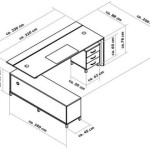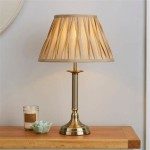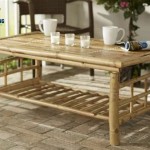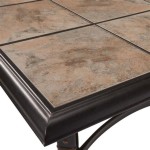Kitchen Table Designs For Small Spaces
The kitchen, often considered the heart of the home, can present a design challenge when space is limited. A suitable kitchen table becomes crucial, serving not only as a dining surface but also potentially as a workspace, food preparation area, or social gathering spot. Selecting the right kitchen table for a small space requires careful consideration of size, shape, material, and functionality to optimize the available area without compromising comfort and aesthetics.
This article will explore various kitchen table designs tailored for small spaces, outlining key considerations for maximizing efficiency and style within confined environments. Different table types, materials, and configurations will be examined to assist in making informed decisions when furnishing a compact kitchen.
Space-Saving Table Shapes and Sizes
The shape and size of a kitchen table significantly impact the perception and utilization of space, especially in smaller kitchens. Traditional rectangular tables, while versatile, often consume a considerable amount of floor space, potentially hindering movement and creating a cramped atmosphere. Alternative shapes like round, square, or oval tables can offer better spatial efficiency by minimizing sharp corners and promoting a more fluid flow of movement.
Round tables, for instance, can comfortably accommodate several people without requiring a large footprint. They also encourage more intimate conversations. A small, round table placed in the corner of a kitchen can be a practical and aesthetically pleasing option. Square tables are another viable choice, particularly for seating a smaller number of individuals. When placed against a wall, a square table can effectively function as a breakfast nook or a supplementary workspace. Oval tables share the benefits of round tables by eliminating sharp corners, while simultaneously offering a slightly elongated surface area, making them suitable for seating arrangements of four to six individuals.
Beyond shape, the actual dimensions of the table are paramount. Measuring the available space accurately is the first step in selecting an appropriately sized table. Consider the clearance needed around the table for chairs to be pulled out comfortably and for individuals to move around without bumping into obstacles. A general guideline is to allow at least 30 inches of clearance between the table and any surrounding walls or cabinets. Smaller tables, particularly those designed for two people, can effectively transform a limited space into a functional dining area. These tables often feature minimalist designs and can be easily tucked away when not in use.
Drop-leaf tables and gateleg tables offer exceptional flexibility for small kitchens. These tables feature hinged leaves that can be folded down to reduce the table's size when not needed, and extended when additional surface area is required. This adaptable design makes them ideal for individuals who occasionally host guests but primarily need a compact dining solution. When the leaves are folded down, the table can function as a narrow console table or even be stored completely out of sight, freeing up valuable floor space. Corner tables are designed to fit snugly into the corner of a room, making the most of often-underutilized areas. These tables can be particularly useful in kitchens with irregular layouts or alcoves.
Material Selection and Aesthetic Considerations
The material of a kitchen table influences its durability, maintenance, and overall aesthetic appeal. For small spaces, opting for materials that visually lighten the area and contribute to a sense of openness is often preferable. Glass-topped tables, for example, create an illusion of more space by allowing light to pass through, making the kitchen feel less cluttered. The transparency of the glass also showcases the floor underneath, further enhancing the perception of spaciousness. However, glass tables can require more frequent cleaning to maintain their pristine appearance.
Light-colored wood, such as birch, maple, or ash, can also brighten up a small kitchen. These woods offer a natural warmth and can be easily incorporated into various design styles, from Scandinavian minimalism to farmhouse chic. Painted wood tables in light shades like white, cream, or pale gray can further enhance the feeling of openness and airiness. Darker woods, while potentially adding a touch of elegance, can make a small kitchen feel more enclosed and oppressive.
Metal tables, particularly those with sleek and minimalist designs, can be a stylish and practical choice for small spaces. Metal is durable, easy to clean, and often adds a modern touch to the kitchen. Look for tables with slim metal frames and light-colored tops to maximize the feeling of spaciousness. Consider the overall aesthetic of the kitchen when selecting a table material. If the kitchen features a modern design, a glass or metal table might be the most appropriate choice. For a more traditional or rustic kitchen, a light-colored wood table could be a better fit. The table should complement the existing cabinetry, flooring, and appliances to create a cohesive and harmonious look.
Durability is a crucial factor to consider, especially in a kitchen environment where spills and accidents are common. Choose materials that are resistant to scratches, stains, and heat. Laminate or engineered wood tables offer a good balance of affordability and durability and come in a wide range of colors and finishes. Solid wood tables, while more expensive, are highly durable and can be refinished if they become damaged. Consider the maintenance requirements of different materials. Some materials, like glass and metal, require more frequent cleaning than others. Choose a material that fits the lifestyle and cleaning habits to ensure the table remains in good condition for years to come.
Multifunctional Designs and Storage Solutions
In small kitchens, maximizing functionality is essential. Kitchen tables that offer built-in storage or serve multiple purposes can be invaluable for saving space and keeping the area organized. Tables with drawers, shelves, or hidden compartments provide convenient storage for utensils, placemats, napkins, or other kitchen essentials, reducing clutter on countertops and in cabinets.
Consider a table that can double as a workstation for meal preparation or homework. A table with a smooth, durable surface that is easy to clean can be easily transformed into a makeshift countertop when needed. Some tables even feature built-in cutting boards or spice racks to further enhance their functionality. Benches are a popular seating option for small kitchen tables, as they can be pushed completely under the table when not in use, freeing up floor space. Benches can also often accommodate more people than individual chairs, making them a practical choice for families or individuals who frequently host guests. Some benches even feature built-in storage under the seat, providing additional space for storing kitchen items.
Foldable chairs are another space-saving seating option. These chairs can be easily folded and stored away when not in use, minimizing clutter and maximizing floor space. Look for foldable chairs that are comfortable and durable, and that complement the style of the kitchen table. Nesting tables, which consist of a set of tables that fit inside each other, can be useful in small kitchens where occasional extra surface area is needed. When not in use, the smaller tables can be nested under the larger one, saving space. When extra surface area is required, the smaller tables can be pulled out and used for serving food or drinks.
Consider the placement of the table in relation to other kitchen elements, such as the countertops, sink, and stove. Ideally, the table should be placed in an area where it does not obstruct the flow of traffic and where it is easily accessible for meal preparation and serving. A peninsula or island can serve as both a countertop and a dining table in a small kitchen. By extending a countertop or adding a small table to the end of an island, a functional dining area can be created without taking up additional floor space. A wall-mounted folding table can be a very space-efficient solution for extremely small kitchens. These tables can be folded down against the wall when not in use, freeing up valuable floor space. When needed, the table can be easily unfolded to provide a dining or workspace.

7 Small Dining Table Ideas That Win Big Compliments Designcafe

51 Small Dining Tables To Save Space Without Sacrificing Style

35 Super Smart Space Saving Table Designs For Every Small Engineering Discoveri Dinning Room Design Dining Modern Kitchen Furniture

Small Kitchen Table Ideas S Tips From

Smart Tables Seating That Maximise Small Dining Spaces

13 Clever Design Tricks To Make Any Small Dining Room More Functional Table Decor

51 Small Dining Tables To Save Space Without Sacrificing Style

15 Small Dining Room Ideas How To Decorate Your

7 Small Dining Table Ideas That Win Big Compliments Designcafe

10 Built In Kitchen Table Ideas For Small Spaces Space Island








